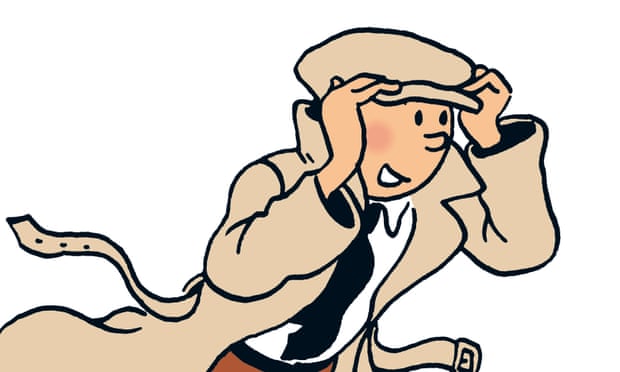Hergé’s adventurer is born again for the iPad age, with a new show and a digital project that puts all his expletives back in. The world’s top Tintinologist talks quiffs, colonialism – and beating Armstrong to the moon
Michael Farr discovered Tintin at the age of four. Sixty-odd years later, after a career spent – like his boyhood hero – as a foreign reporter, he is a top Tintinologist, speaking at Tintin conferences around the globe, where aficionados gather for talks on such topics as Gender (Re)presentation in The Adventures of Tintin, or Tintin and the European Identity.
Bright-eyed, plump-cheeked and unflaggingly enthusiastic, Farr even looks a little like a somewhat older version of the intrepid cartoon adventurer.
Shortly after Hergé, the creator of Tintin, died in 1983, Farr went to Brussels to pay his respects. He found the team of artists who worked in Hergé’s studio deeply depressed. “His widow wanted to observe Hergé’s wish that Tintin should die with him,” says Farr, meaning that there would be no new books. “His right-hand man, Bob de Moor, was devastated. He said, ‘In five years, Tintin will be completely forgotten.’”
He could not have been more wrong. More than 40 years since his last adventure, the intrepid boy reporter is one of the most popular comic characters ever created. Tintin has sold more than 200m books in over 90 countries – and, in 2011, starred in his own Spielberg blockbuster.
What makes him still so popular? “The books overflow with adventure,” says Farr. “They’re page-turners. Then there’s the drawing: the ligne claire is so cinematic. There’s slapstick, but there’s sophisticated satire and political comment, too.”
More
Bright-eyed, plump-cheeked and unflaggingly enthusiastic, Farr even looks a little like a somewhat older version of the intrepid cartoon adventurer.
Shortly after Hergé, the creator of Tintin, died in 1983, Farr went to Brussels to pay his respects. He found the team of artists who worked in Hergé’s studio deeply depressed. “His widow wanted to observe Hergé’s wish that Tintin should die with him,” says Farr, meaning that there would be no new books. “His right-hand man, Bob de Moor, was devastated. He said, ‘In five years, Tintin will be completely forgotten.’”
He could not have been more wrong. More than 40 years since his last adventure, the intrepid boy reporter is one of the most popular comic characters ever created. Tintin has sold more than 200m books in over 90 countries – and, in 2011, starred in his own Spielberg blockbuster.
What makes him still so popular? “The books overflow with adventure,” says Farr. “They’re page-turners. Then there’s the drawing: the ligne claire is so cinematic. There’s slapstick, but there’s sophisticated satire and political comment, too.”
More


No comments:
Post a Comment